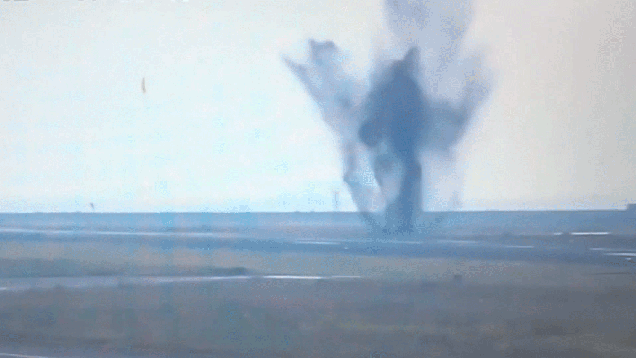The Legacy of World War II: Unexploded Ordnance and Its Modern-Day Risks
Understanding the Risks of Unexploded Ordnance
World War II left an indelible mark on the world, not only through its historical events but also through the remnants of warfare that continue to pose risks today. One of the most pressing issues is unexploded ordnance (UXO), which refers to explosive weapons that did not detonate when they were supposed to. These remnants can remain dangerous for decades, as evidenced by a recent incident where a bomb dropped during the war unexpectedly detonated after lying dormant for over 75 years. This incident highlights the ongoing threat posed by UXOs, particularly in regions where battles were fought.
The implications of such events are significant. UXOs can cause injuries, fatalities, and property damage, and they often complicate land use and development in affected areas. According to a report by the United Nations, millions of unexploded bombs and munitions remain scattered across Europe, Asia, and the Pacific, posing a persistent danger to civilians and military personnel alike.
Historical Context: Why Are UXOs Still a Concern?
The sheer scale of World War II warfare contributed to the prevalence of UXOs. It is estimated that millions of tons of bombs were dropped during the conflict, with many failing to explode. For instance, in Germany alone, approximately 15% of the bombs dropped during the war are believed to be unexploded. This creates a significant challenge for countries still dealing with the aftermath of the war.
In Japan, the recent detonation of a WWII bomb serves as a stark reminder of the potential lethality of these remnants. The bomb, which had been buried for decades, unexpectedly exploded, causing panic and raising questions about safety protocols in areas known to have been affected by wartime activities. Such incidents underscore the importance of ongoing efforts to locate and safely dispose of UXOs.
The Human Impact: Case Studies and Statistics
The human cost of UXOs is profound. According to the Landmine and Cluster Munition Monitor, thousands of people are killed or injured each year by unexploded ordnance. In countries like Cambodia and Vietnam, where extensive bombing campaigns were conducted, communities continue to face the repercussions. For example, in Cambodia, it is estimated that around 20,000 people have been killed or injured by landmines and UXOs since the end of the Khmer Rouge regime in 1979.
Moreover, the psychological impact on communities living in close proximity to UXOs cannot be overlooked. The constant fear of accidental detonation can hinder economic development and displace populations, as people are reluctant to return to areas deemed unsafe. This creates a cycle of poverty and instability that can last for generations.
Mitigation Efforts: How Are Countries Addressing the Issue?
In response to the ongoing threat of UXOs, many countries have implemented comprehensive clearance programs. These initiatives often involve collaboration between governments, non-governmental organizations, and international agencies. For instance, organizations like Mines Advisory Group (MAG) and the Halo Trust work tirelessly to locate and safely dispose of UXOs, providing training and support to local communities.
Technological advancements have also played a crucial role in UXO detection and clearance. Drones equipped with advanced imaging technology are increasingly being used to survey areas suspected of containing unexploded ordnance. This not only speeds up the clearance process but also enhances safety for personnel involved in these operations.
Community Awareness and Education: A Vital Component
Education and awareness are essential in mitigating the risks associated with UXOs. Communities must be informed about the dangers of unexploded ordnance and trained on how to respond if they encounter suspicious objects. Programs that engage local populations in UXO awareness campaigns can significantly reduce the number of accidents and fatalities.
For example, in Laos, where UXOs are a persistent issue, community education programs have been instrumental in teaching children and adults about the risks and safe practices. These initiatives have proven effective in reducing accidents and fostering a culture of safety.
The Path Forward: Ensuring a Safer Future
As we reflect on the legacy of World War II, it is crucial to recognize the ongoing challenges posed by unexploded ordnance. The recent detonation of a WWII bomb serves as a reminder that the past is not as distant as we might think. Continued efforts in clearance, education, and community engagement are essential to mitigate the risks associated with UXOs.
By investing in technology, fostering international cooperation, and prioritizing community safety, we can work towards a future where the remnants of war no longer pose a threat to innocent lives. The journey may be long, but with sustained commitment and collaboration, we can ensure that history does not repeat itself in the form of unexploded ordnance.

